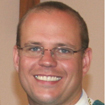In my review of Making Sense of Scripture: Big Questions about the Book of Faith, by David J. Lose, I mentioned a woman named Mary — bright, faithful, inquisitive — who was not always sure how to engage the Bible or if the Bible was going to engage her.
I looked forward to putting Lose’s book in her hands. More to the point, I was looking forward to using Lose’s course to teach people like Mary how to read the Bible with greater understanding and with more meaningful connections to their faith. I thought the book and the course would work very well. I was right, but not always in the ways I imagined.
Shortly after Easter, almost 30 members of the Lutheran congregation I serve joined me for the first of seven weekly classes. We started with a simple question: What is the Bible? I could tell from their answers that the topic was meeting a need. Everyone agreed quickly that the Bible was God’s Word, but after that things got interesting. It was clear that all sorts of issues would be on the table. What does it mean to say that scripture is inspired? What if my scientific understanding of the world conflicts with what scripture says? What if the Bible just does not make sense to me? And how does one manage to make it through Leviticus?!
The good news is that Making Sense of Scripture is designed to facilitate discussion about exactly these issues (folks might even discover the fortitude to read Leviticus). Lose introduces each session with an engaging DVD presentation, after which the class brings forth their own insights and questions. The bulk of each session is comprised of two components: “Join the Conversation” and “Open Scripture.” The former is a chance to discuss the theoretical elements of each lesson; the latter provides time to apply the lessons at hand.
Participants are encouraged to think through not simply what the Bible is, but what the Bible does and how it does it. The first four lessons focus on the nature of scripture, namely, the ongoing story of God and God’s people, a history that includes each of us. Issues of whether or not the Bible is true are handled through a deft discussion of the fact-value split; the misconception that fact is a synonym for truth is dismissed convincingly.
After all, who is passionate about facts? It is our stories that move our lives. If the Bible is our story, then maybe our lives might really be moved by reading it. This was evident in participants’ desire to share how scripture had touched their lives. Matters of seeming contradiction are presented in terms of the story each biblical author is telling. If Jesus is said to be killed on different days in different gospels, perhaps we should not be so quick to wipe away the difference. Instead, we could ask what Matthew or John might be trying to convey through their differing accounts.
The final three sessions are designed to create a deeper understanding of scripture as we read it. In my reading of the book I found these to be the most enjoyable chapters. But chapter five posed difficulties for my class. While I found Lose’s take on hermeneutics and biblical exegesis to be refreshingly accessible, the class struggled with the material. They showed up that evening with a deep sense of bewilderment. This seemed to grow largely out of a desire to read the Bible for personal faith development. Members of the class were confused as to why there would be four (or more) different ways to read the Bible.
My task that night was to focus on Lose’s previous point that the Bible is something that does something to the reader. The task became connecting what he terms the “in” and the “in front of” with one another; the reader and her life situation are connected to the scripture in what God has to say. The places we look for meaning that are “behind” and “around” were, in the minds of the class, relegated to supporting status as tools to rely on rather than methods that yield primary meaning for faith.
Session six yielded wonderful conversation about how certain portions of scripture naturally help shape our understanding of the other sections of the Bible, and session seven helped us put it all together as to how the Bible has authority. As fruitful as the last three sessions were, the first four sessions were most appreciated by the class. By the time we got to session five it would have been helpful to have more “hand-on” experiences. While the “Open Scripture” components were helpful, a facilitator would do well to add more. The one suggestion offered by the class to improve the course was, of all things, homework. They were hungry to get into scripture to use their newfound tools.
The true benefit of the course came right away and lasted throughout. The one thing everyone in the class suddenly felt in regard to the Bible was permission. Permission to question the Bible, to doubt it, to come to it with one’s own story in mind, to be unsure of what it even is, to disagree with those whose view seems, well, wrong, and most of all, to see oneself in the biblical narrative. This all added up to a liberating sense of permission to just go ahead and read the Bible.
When I asked who was ready to sign up for the next Wednesday night study, one in which we would crack open the Bible and see what God would do to us, every hand in the room shot up. Once we are willing to do that, God will no doubt do something to us.

